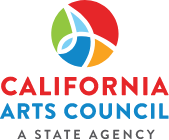Spearheaded by the Museum Education Division of the National Art Education Association (NAEA) and the Association of Art Museum Directors (AAMD) with funding from the Institute of Museum and Library Services (IMLS) and the Samuel H. Kress Foundation, RK&A conducted a national study of the effects of facilitated single-visit art museum programs on students in grades 4-6. The results of this study are critical. Facilitated single-visit programs are the most common way art museums serve K-12 students; yet, there is a dearth of rigorous research about the effects of these programs.
In this study, facilitated single-visit programs are defined as one-time museum field trips in which students engage with original works of art within the physical setting of an art museum. Students are led by a representative of the museum (trained volunteer docent or staff member) who uses
inquiry-based pedagogies to guide students in discussions about works of art. The study team hypothesized that “though short in duration, single-visit programs affect students in complex, multi-dimensional ways; there is not one direct effect, but rather potentially multiple, interrelated
effects that are central to the education of young people in particular: creative thinking, critical thinking, sensorial and affective responses, human connections, and academic connections.”
Through a quasi-experimental study, we measured the effects of facilitated single-visit art museum programs on students. Ultimately, we found that a facilitated single-visit program in an art museum affects students in grades 4-6 in four ways:
- QUESTIONING: Students ask more complex questions about works of art
- MULTIPLE INTERPRETATIONS: Students are more accepting of multiple interpretations of a work of art
- PHYSICALITY OF ART: Students are more likely to think about art in terms of its material properties
- EMOTIVE RECALL: Students experience greater emotive recall of the program
The above benefits are the result of a facilitated single-visit program in an art museum; please note we did not find these same benefits for students who received a similar one-time classroom program. A close examination of the data, which are elaborated upon in this document, reveals the nuances and complexity inherent in these results. The graphic on the next page begins to clarify the relationship between teaching and learning during facilitated single-visit art museum programs, although further discussion is necessary to identify its many implications.

